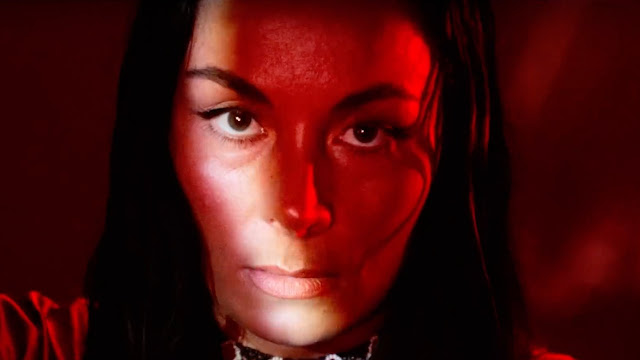The Other Side of the Wind
Shoot 'em all dead.
THE OTHER SIDE OF THE WIND was described by its writer/director as his greatest film. In the documentary THEY'LL LOVE ME WHEN I'M DEAD, Orson Welles seems enthused about his first film in the U.S. after twenty years abroad. Reporters are baffled by his attempts at explanations, his plans to go beyond what any film had done previously. They had no idea how true this would turn out to be. Neither did Welles, who would not live to see the 2018 release, forty plus years delayed. On Netflix, no less.
THE OTHER SIDE OF THE WIND was shot over six years in the early to mid 1970s. Financiers came and went. Inspiration, too, probably. There were some difficulties with the cast that you can read about in my review for THEY'LL LOVE ME.....Orson Welles had created an impressive CV of films, though most were troubled in some fashion. And CITIZEN KANE always loomed large, always the yardstick. It may well have been a career curse. So by the '70s Welles was looking to experiment, to blur reality and fantasy. F FOR FAKE was his final completed film as director, and plays creatively with the whole notion of a documentary. So does WIND, but its ambitions are far grander.
So, arguably, are its pretentions. I don't toss that word around too much, but there are moments of WIND that were embarrassingly so. Unavoidable when you're following a group of Hollywood players and the paparazzi. The film is mostly a birthday party for fictional legendary director Jake Hannaford (played by the legendary John Huston), whose career has tumbled and latest opus - an attempt to be relevant in the "New Hollywood" - is unfinished and out of money. And, the hunky leading man walked off the set in humiliation and anger (in a great scene where his director's voice is heard off camera, as if he's God himself). The party is at the director's mansion, and he is accosted by the aforementioned and a confrontational film critic named Juliette Riche (Susan Strasberg), clearly modeled after Pauline Kael. At Hannaford's side is his protege Brooks Otterlake, who has had a run of success; he is played by Peter Bogdanovich quite autobiographically. He was a close friend of Welles, who insists that Huston does not represent him. Right.
Welles' (and later, Bob Murawski's) editing is quite revolutionary and avant garde for its time. Average Shot Length? A few milliseconds. This creates great disorientation for viewers as we watch the party scenes in black and white through documentarians' lenses. Even today, after years of a similar style in countless movie and television programs, it seems original and daring. Even more so is the film-within-a-film, Hannaford's same named art piece that contains striking imagery and color. These scenes are a spoof (homage?) of the works of directors like Michelangelo Antonioni. I'd like to see a cut of just that movie. Amazingly stylish and brazenly erotic, the latter mainly because of Oja Kodar, Welles' girlfriend. It might play at least as well as ZABRISKIE POINT.
"Is there a movie in it?" Otterlake asks at one point. I'm still deciding. THE OTHER SIDE OF THE WIND was both endlessly fascinating and an ordeal, so it guess it succeeds in a way. This is certainly a valuable document, filled with fine actors and Welles' undeniable talents. I'm glad it was finally rescued. But this film is only for fans of Welles, students of the time period, rabid film buffs, and those with a taste for the adventurous. As they say, all others beware.



Comments